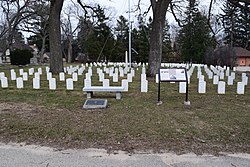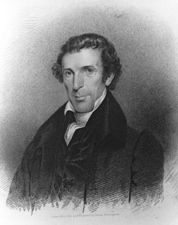
William Taylor Barry was an American statesman, jurist and slave owner. He served as Postmaster General for most of the administration of President Andrew Jackson and was the only Cabinet member not to resign in 1831 as a result of the Petticoat affair.
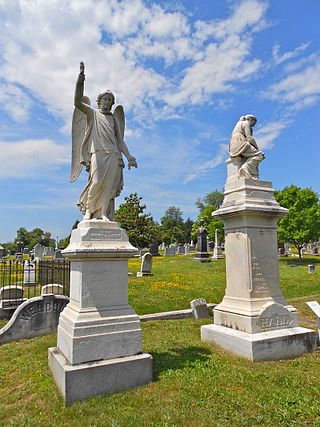
The Congressional Cemetery, officially Washington Parish Burial Ground, is a historic and active cemetery located at 1801 E Street, S.E., in Washington, D.C., on the west bank of the Anacostia River. It is the only American "cemetery of national memory" founded before the Civil War. Over 65,000 individuals are buried or memorialized at the cemetery, including many who helped form the nation and Washington, D.C. in the early 19th century.
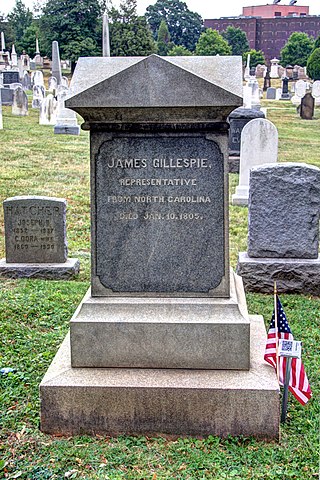
James Gillespie was an American Revolutionary War veteran and politician from North Carolina. He was first elected to the U.S. House of Representatives in 1793 and died in office on January 10, 1805. He also served in the North Carolina House of Commons, and other various positions in the state government.

Indian Mound Cemetery is a cemetery located along the Northwestern Turnpike on a promontory of the "Yellow Banks" overlooking the South Branch Potomac River and Mill Creek Mountain in Romney, West Virginia, United States. The cemetery is centered on a Hopewellian mound, known as the Romney Indian Mound. Indian Mound Cemetery is also the site of Fort Pearsall, the Confederate Memorial, Parsons Bell Tower, and reinterments from Romney's Old Presbyterian Cemetery. The cemetery is currently owned and maintained by the Indian Mound Cemetery Association, Inc.

James Ole Davidson was a Norwegian American immigrant and the 21st governor of the U.S. state of Wisconsin. He also served as lieutenant governor of Wisconsin and state treasurer.

The Texas State Cemetery (TSC) is a cemetery located on about 22 acres (8.9 ha) just east of downtown Austin, the capital of the U.S. state of Texas. Originally the burial place of Edward Burleson, Texas Revolutionary general and vice-president of the Republic of Texas, it was expanded into a Confederate cemetery during the Civil War. Later it was expanded again to include the graves and cenotaphs of prominent Texans and their spouses.

Forest Home Cemetery is a historic rural cemetery located in the Lincoln Village neighborhood of Milwaukee, Wisconsin and is the final resting place of many of the city's famed beer barons, politicians and social elite. Both the cemetery and its Landmark Chapel are listed on the National Register of Historic Places and were declared a Milwaukee Landmark in 1973.

The Frankfort Cemetery is a historic rural cemetery located on East Main Street in Frankfort, Kentucky. The cemetery is the burial site of Daniel Boone, the famed frontiersman, and contains the graves of other famous Americans including seventeen Kentucky governors and a Vice President of the United States.
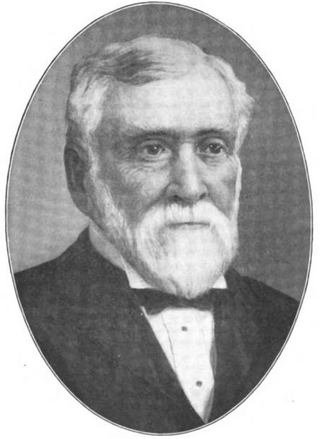
Orsamus R. Cole was an American lawyer and judge. He served as the 6th Chief Justice of the Wisconsin Supreme Court, and, until 2013, was the longest-serving justice in the Court's history, with nearly 37 years on the high court. He also represented Wisconsin's 2nd congressional district in the U.S. House of Representatives for the 31st Congress (1849–1850). His name is frequently misspelled as Orasmus.

Nils Pederson Haugen was a Norwegian American immigrant, lawyer, and politician. He served four terms in the United States House of Representatives, representing western Wisconsin. He was a leading member of the Progressive Movement in Wisconsin and a national expert on tax reform. The village of Haugen, Wisconsin, in Barron County, was named after him.
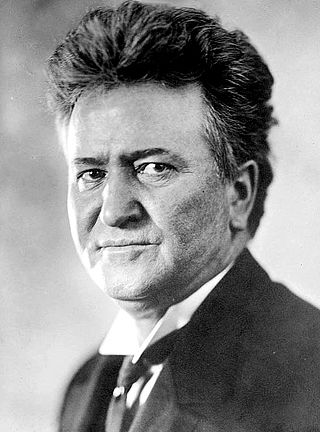
The La Follette family is a prominent family in the United States, especially in Wisconsin. Many of the family members have pursued political office.
Confederate monuments and memorials in the United States include public displays and symbols of the Confederate States of America (CSA), Confederate leaders, or Confederate soldiers of the American Civil War. Many monuments and memorials have been or will be removed under great controversy. Part of the commemoration of the American Civil War, these symbols include monuments and statues, flags, holidays and other observances, and the names of schools, roads, parks, bridges, buildings, counties, cities, lakes, dams, military bases, and other public structures. In a December 2018 special report, Smithsonian Magazine stated, "over the past ten years, taxpayers have directed at least $40 million to Confederate monuments—statues, homes, parks, museums, libraries, and cemeteries—and to Confederate heritage organizations."

There are more than 160 monuments and memorials to the Confederate States of America and associated figures that have been removed from public spaces in the United States, all but five of which have been since 2015. Some have been removed by state and local governments; others have been torn down by protestors.

Confederate Rest, in Forest Hill Cemetery, Madison, Wisconsin, is the northernmost Confederate graveyard in the nation. 140 Confederate prisoners of war who died under Union captivity lie in it.

The Confederate Soldier Memorial, or Confederate Monument, is located in the Maple Hill Cemetery in Huntsville, Alabama.
Following is a list of notable alumni of the University of Wisconsin Law School.
